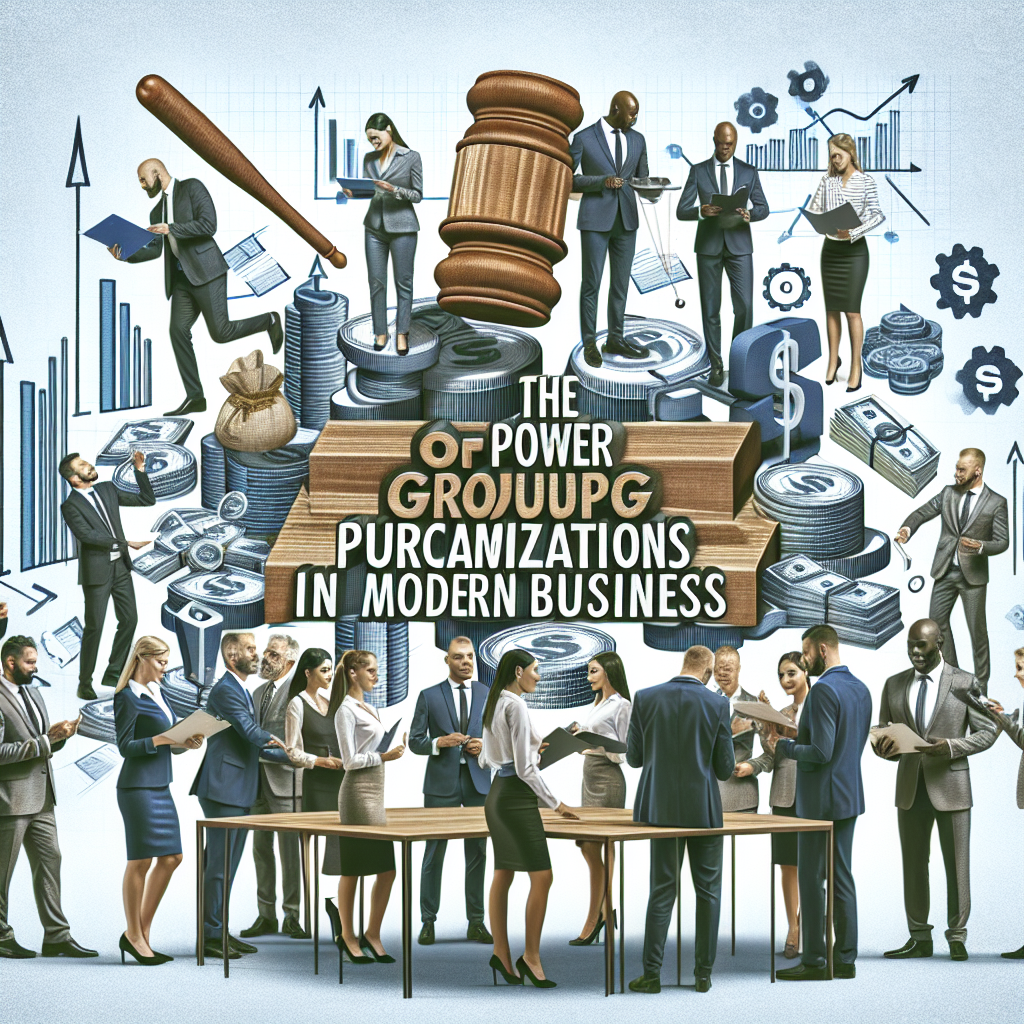Several organizations work together to use their combined purchasing power to negotiate lower prices for goods and services through a procurement strategy known as cooperative purchasing. Governmental bodies, academic institutions, and non-profits frequently use this strategy to combine resources and bargain for better terms with suppliers. Collaborating, participating entities can attain significant cost savings, enhance their access to a wider array of goods & services, and streamline their procurement procedures. Programs for cooperative purchasing are typically run by a lead agency or organization, which oversees the procurement procedure for all members involved. This central organization is in charge of negotiating contracts, requesting bids, & making sure that all applicable procurement laws are followed. All parties benefit from streamlined purchasing procedures and reduced administrative overhead thanks to the centralization of these activities.
Key Takeaways
- Cooperative purchasing involves multiple organizations coming together to leverage their collective buying power for goods and services.
- The benefits of cooperative purchasing include cost savings, access to a wider range of suppliers, and streamlined procurement processes.
- Finding the right cooperative purchasing program involves researching available options, evaluating the needs of the organization, and considering factors such as pricing, supplier network, and contract terms.
- Maximizing savings through bulk purchasing requires careful planning, strategic sourcing, and effective inventory management to avoid overstocking.
- Leveraging negotiating power with suppliers involves building strong relationships, conducting thorough market research, and being open to exploring alternative solutions.
- Implementing cost-saving strategies in cooperative purchasing includes standardizing specifications, consolidating orders, and optimizing delivery schedules.
- Evaluating the success of cooperative purchasing involves tracking cost savings, supplier performance, and overall procurement efficiency to identify areas for improvement.
Also, by giving members access to pre-negotiated contracts with a network of approved suppliers, these programs frequently enable members to quickly and affordably acquire the goods and services they require. Cost reductions via group purchasing power. Organizations can save a lot of money by combining the purchasing power of several different entities.
Members can negotiate better terms, volume discounts, and cheaper prices with suppliers by pooling their purchasing power, which can save them a significant amount of money on a variety of products & services. Increased Access to a Greater Range of Goods and Services. A larger range of goods and services are available to participants in cooperative purchasing programs thanks to their access to a network of pre-approved suppliers. By doing this, businesses can get high-quality products and services from reliable vendors and expedite the procurement process.
Reduced Administrative Burden. Through the reduction of the administrative burden associated with procurement, cooperative purchasing programs can help members save time & money. These programs enable members to quickly and effectively obtain the goods and services they require without having to go through a drawn-out bidding process by centralizing the procurement process and giving access to pre-negotiated contracts. Organizations must carefully consider all of their options when choosing a cooperative purchasing program, making sure that the program fits their unique goals and needs.
| Metrics | Results |
|---|---|
| Number of participating organizations | 200 |
| Percentage of cost savings | 30% |
| Types of products purchased | Office supplies, IT equipment, cleaning supplies |
| Annual spending on cooperative purchasing | 5 million |
The assessment of the range of products and services that the organization regularly purchases is one of the first steps in this process. This can assist in determining the kinds of cooperative buying initiatives that are most appropriate for the demands of the company. For instance, certain programs might concentrate on office supplies and equipment, whereas others might be more concerned with building supplies or expert services. It is imperative for organizations to take into account the potential geographic reach of cooperative purchasing initiatives. While some programs might only be available in a single state or area, others might be available across the country or even the world. Businesses can assess whether a program fits their supplier requirements and procurement needs by knowing how far it covers geographically.
Also, companies ought to assess the standing and performance history of possible cooperative purchasing initiatives, encompassing their proficiency in contract negotiations, supplier relationship management, & member value delivery. Making the most of bulk purchasing is a crucial tactic for optimizing savings through cooperative purchasing. Members can bargain with suppliers for reduced prices and volume discounts by pooling their purchasing power. This enables companies to save a lot of money on a variety of products & services, including professional services, building supplies, office supplies, and technology equipment.
Members can obtain better terms and prices from suppliers by committing to higher purchase volumes, which will ultimately lower their procurement costs. Bulk purchasing can benefit businesses not only by lowering costs but also by streamlining their procurement procedures & lightening their administrative load. Members of the cooperative purchasing program can streamline their purchasing processes and gain access to a greater range of goods and services from pre-approved vendors by grouping their orders into one order. By removing the need to handle numerous supplier relationships and negotiate separate contracts, this can help businesses save time and money.
In the end, procurement activities conducted by organizations can become more efficient & cost-effective when bulk purchases are made through a cooperative purchasing program. Leveraging negotiating power with suppliers is another important advantage of cooperative purchasing. Members can offer a bigger & more alluring opportunity to suppliers by collaborating with other organizations, which may result in better terms & prices. Because of their ability to bargain collectively, organizations are able to get better terms from suppliers, which eventually saves money and increases value for members. Cooperative purchasing programs also frequently have established connections with a pre-qualified supplier network, which can further strengthen members’ bargaining power in contracts. Cooperative purchasing programs can assist members in obtaining value-added services from suppliers in addition to negotiating better prices.
In the course of negotiating contracts, suppliers might be willing to offer cooperative purchasing members more resources or assistance. Extended warranties, educational opportunities, & other perks that improve the members’ overall value proposition can be examples of this. Organizations can obtain additional benefits and lower prices by utilizing their negotiating power through a cooperative purchasing program, which can be integrated into their procurement strategy.
Purchase Opportunities for Groups. Members can further cut their procurement costs by utilizing group buying opportunities. Through joint efforts among members to pool their demand for particular goods or services, companies can attain even larger economies of scale & negotiate more favorable prices with suppliers. Creative Solutions for Procurement. Cooperative purchasing initiatives give businesses access to creative procurement strategies that result in cost savings.
Certain programs, for instance, give participants access to online marketplaces or e-procurement platforms, which speed up the procurement process and give them real-time access to availability and pricing. These digital tools can assist businesses in streamlining their procurement processes, finding areas for cost savings, and making better-informed purchases. Benchmarking and exchanging best practices. Cooperative purchasing schemes can also be used by businesses as a forum for exchanging best practices and comparing their procurement results to those of other participants.
Organizations can find areas for development and put strategies into place that promote increased effectiveness & cost-effectiveness in their procurement operations by working with peers & learning from their experiences. Ultimately, it’s critical that businesses assess the results of their cooperative purchasing program participation on a regular basis. This entails evaluating the program’s effect on their procurement operations, realized cost savings, supplier relationships, and total value produced. Organizations can obtain valuable insights into the efficacy of their program participation by evaluating critical performance indicators, such as supplier performance, time saved during the procurement process, and actual cost savings.
Organizations assessing the effectiveness of cooperative purchasing should take qualitative factors into account in addition to quantitative metrics. This entails evaluating the standards of goods and services acquired through the program, as well as the degree of satisfaction among internal stakeholders, including procurement teams and end users. Organizations can find opportunities for improvement and make well-informed decisions about their continued participation in the program by getting input from important stakeholders and regularly reviewing program performance. To ensure that organizations continue to get value from their involvement in cooperative purchasing programs, it is ultimately crucial to assess the program’s effectiveness.
Organizations can optimize the advantages of cooperative purchasing & attain increased efficiency & cost-effectiveness in their procurement endeavors by periodically evaluating the performance of their programs and implementing necessary modifications.
If you’re interested in learning more about indirect spend management, check out this article on 8 Ways to Achieve Indirect Spend Management. It provides valuable insights into how organizations can effectively manage their indirect spending to improve their overall procurement process.





